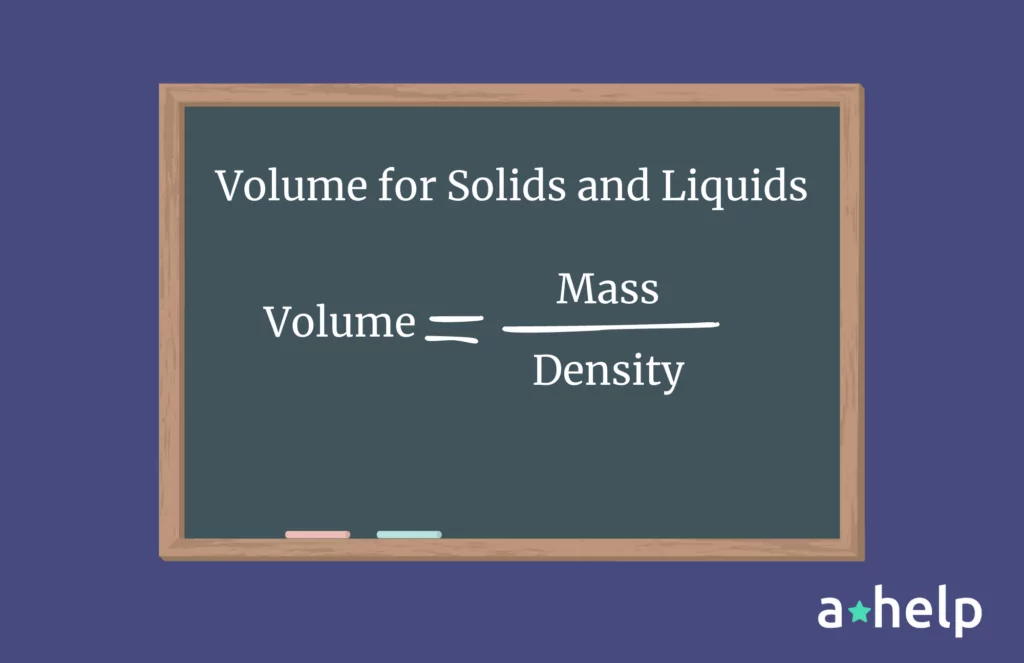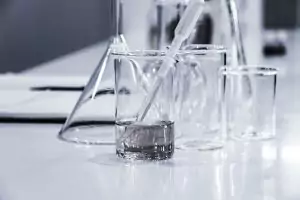When delving into the world of chemistry, understanding how to find volume is a fundamental skill. Volume is a measure of the amount of space occupied by matter, and it plays a crucial role in various aspects of chemistry. In this guide, we will explore the concept of volume in chemistry, the standard units used for measurement, and the methods to calculate volume. We will also touch upon some related topics, including molar volume, net volume, and volume ratio in chemistry.

✅ AI Essay Writer ✅ AI Detector ✅ Plagchecker ✅ Paraphraser
✅ Summarizer ✅ Citation Generator
What Is Volume in Chemistry?
Volume is a term that often pops up in the realm of chemistry. It is a measure of the amount of three-dimensional space an object fills with matter. Whether you are dealing with solid, liquid, or gas, understanding volume is essential for a chemist.
Matter is the physical substance that occupies space and has mass. In chemistry, volume is defined as the amount of space occupied by this matter. When you are working in the lab, it’s crucial to measure the volume of substances accurately. This precision is vital for various applications, such as determining the composition of sample substances and synthesizing chemical compounds.
Standard Units of Volume in Chemistry
In the world of chemistry, specific units are used to measure volume. These units provide a standardized way to express volume across different experiments and contexts. The primary standard unit of volume in chemistry is the cubic meter (m3). However, for practical reasons, other units are derived from this standard unit, including the liter (L) and the milliliter (mL).
Cubic Meters (m3)
The cubic meter is the standard unit of volume in the International System of Units (SI). It represents the volume of a cube with sides of one meter each. While the cubic meter is the fundamental unit, it is often more convenient to use smaller units like liters and milliliters for laboratory work.
Liters (L) and Milliliters (mL)
In chemistry experiments, especially those involving relatively small quantities of liquid solutions, it is common to express volume in liters and milliliters. A liter is equal to 1000 milliliters, making it a practical unit for many laboratory applications. Using these units simplifies calculations and measurements.
Calculating Volume in Chemistry
Now that we understand what volume is and the standard units used for measurement, let’s explore how to calculate volume in chemistry. The method for calculating volume depends on the state of matter and other factors like temperature and pressure.
Solids and Liquids
For solids and liquids, calculating volume is relatively straightforward. If you know the density and mass of the substance, you can easily determine its volume. Density is defined as the unit of mass per unit volume of a substance. To find the volume, you can use the formula:

For example, if you have the mass of a substance and its density under standard conditions (0°C and 1 atm), you can calculate the volume accurately. Pure water, for instance, has a density of 1,000 kg/m3 or 0.9998395 g/mL under these conditions.
Gases
Calculating the volume of gases is more complex than for solids and liquids. In the case of gases, volume is directly dependent on the volume of the container. You cannot state a fixed volume for a gas without referencing the volume of the container. However, the volume of a gas is still proportional to temperature and inversely proportional to pressure.
To calculate the volume of a gas accurately, you need to consider the three fundamental gas laws: Boyle’s law, Charles’s law, and Gay-Lussac’s law. These laws help you understand how volume, pressure, and temperature are related in gas systems.
Exploring Related Concepts
Now that we have covered the basics of finding volume in chemistry, let’s explore some related concepts that expand on this knowledge.
Molar Volume in Chemistry
Molar volume in chemistry is based on Avogadro’s hypothesis, which states that gases of equal volume at standard conditions contain the same number of particles. One mole of any gas occupies a volume of 22.4 liters under standard conditions. This volume corresponds to Avogadro’s number, approximately 6.02×1023 particles.
Molar volume is a crucial concept, especially when dealing with gases, as it allows chemists to relate the volume of a gas to the number of particles it contains.
Net Volume in Chemistry
In chemistry, net volume may refer to the volume delivered during titration, which can be derived from volume measurements in the buret. It is used to determine the precise amount of a substance in a solution by adding a titrant until a reaction is complete.
Net volume can also refer to the remaining volume of a pure substance after impurities have been removed. For example, when purifying tap water samples, the volume may decrease after removing air and solid impurities.
Volume Ratio in Chemistry
Volume ratio in chemistry refers to the proportion of gases that react to form a product in a chemical reaction. This concept is essential in stoichiometry, where you calculate the amounts of reactants and products involved in a chemical reaction.
For instance, if you have a chemical reaction where nitrogen and oxygen react to form nitrogen dioxide, you can use volume ratios to determine the quantities of each gas required. Avogadro’s molar volume hypothesis plays a significant role in these calculations.
Conclusion
Understanding how to find volume in chemistry is essential for anyone working in the field, just as it’s important to know about the different types of indicator in chemistry. Whether you are measuring the volume of a liquid solution, calculating the volume of a gas, or exploring related concepts like molar volume and net volume, a solid grasp of these concepts is crucial for precise and meaningful chemical experiments. Remember that the standard units of volume, such as liters and milliliters, simplify measurements and calculations, making your work in the laboratory more efficient and accurate.
FAQ
Follow us on Reddit for more insights and updates.





Comments (0)
Welcome to A*Help comments!
We’re all about debate and discussion at A*Help.
We value the diverse opinions of users, so you may find points of view that you don’t agree with. And that’s cool. However, there are certain things we’re not OK with: attempts to manipulate our data in any way, for example, or the posting of discriminative, offensive, hateful, or disparaging material.